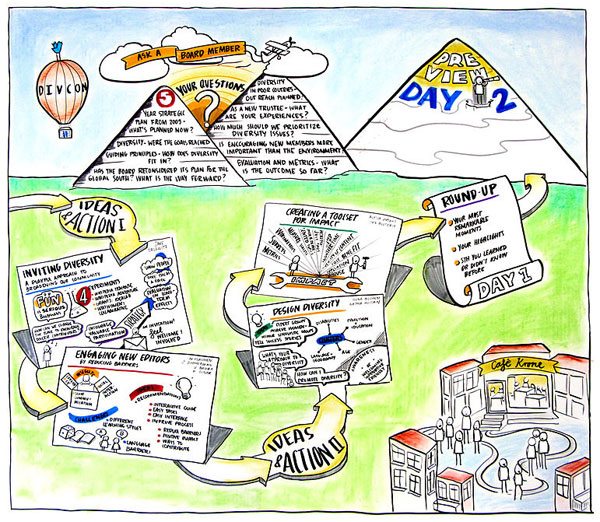
January 10, 2018; The Conversation
Writing in The Conversation, Kenneth Taylor, former CEO of Big Brothers Big Sisters of Central Texas and currently an Assistant Professor of the Practice at Texas A&M, observes that “Imbalances of power create opportunities for the people who have historically called the shots to abuse their authority—whether that means paying people of color less than whites for the same work or committing the kinds of outrages that the #MeToo movement and its offshoots are now bringing to light.”
Taylor notes that his own experience speaks to this; as he explains:
After spending nine years working for Big Brothers Big Sisters of America, the nation’s largest youth mentoring organization, I was thrilled to move from its national headquarters in Philadelphia for a job as its temporary CEO of its Austin, Texas, affiliate.
I was even more excited when the board wanted to hire me permanently six months later. But my enthusiasm soon fizzled upon discovering that the same board that unanimously wanted me to lead the organization also collectively decided to pay me after this promotion thousands of dollars less than my predecessor—a white woman with less experience than me who had approximately the same academic credentials.
Attempting to negotiate a more equitable salary with a board that was all white aside from one black man made me more discouraged. I was simply told the matter was not up for discussion.… Though I eventually accepted the board’s offer based on what I believed to be right in terms of my career path, in my heart I knew I was discriminated against in terms of compensation.
Sign up for our free newsletters
Subscribe to NPQ's newsletters to have our top stories delivered directly to your inbox.
By signing up, you agree to our privacy policy and terms of use, and to receive messages from NPQ and our partners.
The story that Taylor tells took place in 2005, but the demographics of nonprofit boards have not changed significantly since. As Taylor points out, while “only 61.3 percent of Americans are white, about 84 percent of nonprofit board members are in that demographic group, along with 90 percent of nonprofit board chairs.” Taylor’s data comes from the Leading with Intent report of BoardSource, with whom NPQ has partnered for a series of webinars. As Taylor notes, the very first “key finding” paragraph in the BoardSource study includes the following sentence: “Despite reporting high levels of dissatisfaction with current board demographics—particularly racial and ethnic diversity—boards are not prioritizing demographics in their recruitment practices.”
Taylor acknowledges that the leadership ranks of nonprofits are a bit more racially and ethnically diverse than their corporate counterparts. In 2016, Deloitte Touche Tohmatsu coauthored a report with the Alliance for Board Diversity called the Missing Pieces report, which looked at board diversity at Fortune 500 companies. As Taylor notes, the numbers in the nonprofit sector are better than in the corporate sector, but the difference is only a matter of degree. The data from the two reports can be easily summarized in tabular form:
| White | People of Color | |
| Population | 61% | 39% |
| Nonprofit Board Member | 84% | 16% |
| Fortune 500 Board Member | 86% | 14% |
| Nonprofit Board Chair | 90% | 10% |
| Fortune 500 Board Chair | 96% | 4% |
As Taylor points out, while the imperative for greater diversity of leadership exists in both the corporate and nonprofit sectors, nonprofits have a greater responsibility, in part because such a large share of nonprofits “serve communities with great needs, a population that is disproportionately made up of people of color.”
What can be done? Taylor suggests a few steps:
- Understand the Status Quo: “Acknowledge the job dissatisfaction of employees of color” and consider whether factors such as lower pay might be driving dissatisfaction.
- Communicate: “Consistently communicating why [diversity] would advance the group’s mission—and is worth the trouble—is key. So is letting employees of color know their input is highly valued.”
- Create Space for Feedback: “Airing feedback from employees of color at board meetings helps groups that are taking this task seriously.”
- Mentor: Develop leaders of color by “requiring nonprofit executives to identify, hire and mentor non-whites for leadership roles.”
Vernetta Walker at BoardSource also emphasizes the importance of communication, as well as the importance of building group consensus to support diversity, developing an action plan, building a pipeline of potential board members of color, engaging new board members of color in areas that match their skills and interests, and committing to monitoring results.
As Taylor also notes, a window currently exists to achieve greater diversity, as many older nonprofit board members may soon be stepping down, creating openings for a new more diverse generation of leadership. But that will only occur if that opportunity is seized. Taylor concludes, “With many nonprofits undergoing leadership successions today, there’s no time to waste.”—Steve Dubb













